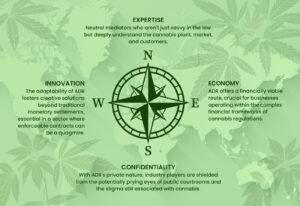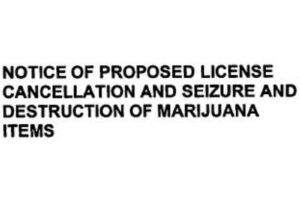We advise some of the largest companies in the U.S. on hemp-derived cannabidiol (hemp-CBD) products. Those companies are filled with lawyers, and the lawyers have many specializations. Most of them, however, have little or no familiarity with hemp-CBD, and that is why they reach out and hire us. In the preliminary emails and phone calls, a very common question those lawyers ask is this: “The FDA has stated that it is ‘not legal’ to introduce THC or CBD products into the marketplace. What are we are missing?” It’s a great question, of course. Our typical explanation is along the lines below.
The FDA has taken a “not legal” position on hemp-CBD in consumables through its oft-cited FAQ and elsewhere. This FDA position is generally understood as “informal guidance” or a “statement of policy”, or sometimes a “nonlegislative rule” or an “interpretive rule”, which by any name does not have the force of law. FDA commonly issues informal guidance as its primary method of policy-making, which means that the agency does not undertake the Administrative Procedure Act (APA) process of “notice and comment” rulemaking in many cases. This has been FDA custom for a long time.

The recent legalization of industrial hemp and sudden proliferation of related consumable products is the classic example of FDA choosing the “guidance” route over binding rulemaking. The underpinning administrative philosophy here is that nonbinding, informal guidance allows the agency to efficiently deploy resources, while maintaining administrative flexibility. The latter is going to be key with CBD, given the intense public interest in that decidedly safe compound.
Someone could (and might) sue FDA if FDA were to take an enforcement action based solely on the fact that a food or beverage product containing Farm Bill hemp-CBD were sold in commerce. Would they win? I’m guessing not. But the question for the courts would be what level of deference to afford FDA, and the law is somewhat unclear on that today. Some commentators believe that Congress needs to clarify the issue, arising from a line of cases known as Chevron and Mead. But the fact remains that FDA hasn’t taken any enforcement against these products since January 4 to our knowledge, and that very limited enforcement was taken under unclear circumstances. We believe that FDA will likely continue to act where people make health claims that violate the FD&C Act. However, that’s a universal issue and not specific to hemp-CBD.
Many people are taking the considered position that hemp-derived CBD products do not violate the FD&C Act. Others are just moving ahead in the marketplace without thinking hard at all, given the proliferation of products and seemingly relaxed administrative regime. Interestingly, the position that these products are lawful under the FD&C Act was FDA’s original position as well. The agency went even further last fall, in fact, with the stated position that CBD should not be controlled in any sense. Upon running that by DEA, however, the latter agency advised that removing controls from CBD would violate international treaties to which the U.S. in a signatory. We summarized that saga here.
FDA is currently slated to hold hearings next month on CBD in food and beverage products. This was scheduled after letters from congresspeople, on the agency understanding that “Congress wants there to be a pathway for CBD available.” That seems to be the prevailing sentiment among industry, consumers, and almost everyone else — including FDA.
So what does all of this mean? It means that from its current, informal position, FDA appears to be moving toward solutions for hemp-CBD in the marketplace, rather than in the opposite direction (via protracted APA rulemaking to formally limit CBD products). This development, along with the apparent regime of FDA nonenforcement, has emboldened many businesses–including some very large companies–to move in now and gain a first mover advantage. As a law firm that has worked in and around cannabis for almost a decade, we love it. And we are definitely cheering for them.























